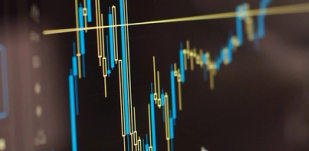Foreign Exchange Rate Forecasting for Multi-Currency Companies
Newton’s third law of motion says that for one reaction, there is an equal and opposite reaction. This is true in both the physics lab and in forex markets. When one currency falls, so another rises. It’s a state of constant movement.
For businesses engaged in cross-border trade, the unpredictability of exchange rates can be a source of anxiety. At best, currency fluctuation creates uncertainty. At worst, it can deliver a loss. Foreknowledge, to be on the right side of shifting currencies, would eliminate much of this worry. But, without a crystal ball, or reading tea leaves, how can international companies properly predict the ups and downs of currencies? The answer is foreign exchange rate forecasts – methodologies that let you see the forex future. Read on to discover more about this science, and why it must be essential practice for multi-currency companies.
Why do MNCs forecast exchange rates?
Because they operate across frontiers and have locations in more than one country, Multinational Corporations (MNCs) are singularly exposed to the negative impacts of currency fluctuation. Volatility is their enemy. To defeat it, MNCs use currency forecasts to predict the future value of the monies they transact in. For the short-term, these currency predictions are used to better determine product pricing and conditions of sale. For the mid-term, the calculations can improve important corporate forecasts, including cash flow, profit & loss, investment planning, Mergers & Acquisitions (M&A), and the company’s long-range outlook for the global business environment.
Three ways to forecast currency exchange rates
There is no single silver bullet for exchange rate prediction. Instead, multi-currency companies may use a mixture of techniques to achieve the most accurate results.
Three of the more popular exchange rate forecasting methods are:
Purchasing Power Parity (PPP)
Purchasing Power Parity (PPP) is an economic theory that predicts the future of foreign exchange rates by comparing the purchasing power of various world currencies – for example, what does $10 buy in the USA and then again in India? Based on the concept of ‘one price’, PPP is the theoretical exchange rate at which you can buy the same amount of goods and services with different currencies. A light-hearted but well-known unit of PPP is the Big Mac Index, which considers the price of a McDonald’s Big Mac in differing countries. (Big Macs are almost identical, no matter where they are sold). The differential in pricing of each burger is seen as an indicator of the strength of each local economy and the future value of its currency.
ARIMA time series models
Autoregressive Integrated Moving Average (ARIMA) forecasting uses historical data to predict the future of foreign exchange rates. Less economic theory and more pure mathematics, ARIMA sifts multi-point information streams, seeking patterns in historical data to create forecasts for foreign exchange rates. Some of this data may be uncorrelated to currency movements, and may seem random in nature. However, it is this randomness that gives ARIMA its forecasting strength. For example, observing a nation’s historical interest rates, corporate taxes, tourist expenditures, weather patterns and employment rates may achieve a better prediction of the future value of the country’s currency than observations that focus on exchange rates alone.
Relative economic strength
Relative Economic Strength (REC) forecasting observes the fundamental metrics of two markets to assess their comparative strengths – a case of matching like for like. By observing comparative current and historical data from a pair of countries - such as their interest rates, economic growth, inflation, and levels of investment – it is possible to score each country’s financial strength and predict the way their currencies may move against each other. (For example, GBP to USD or GBP to EUR). REC is usually employed in conjunction with other currency forecasting models to provide a more complete and rounded picture of the long-term prospects for currency pairs.
What do forex traders take into account?
To achieve their currency rate forecasts, many FX traders will consider a range of macroeconomic factors. They include:
Financial markets
The world’s financial markets work around the clock. Forex traders will parse the 24-hour news stream related to stocks, bonds, and major market events in search of important clues to better inform their decisions.
Monetary policy
Movements in interest rates can precipitate sudden changes in currency values. Traders will keep a keen eye on central bank announcements in anticipation of currency fluctuations that can happen as a result of an adjustment to monetary policy.
Economic health
Governments regularly publish reports on major economic metrics – such as GDP, inflation rates, employment trends, and exports. They can paint a vivid picture of economic health.
International trade is a prime indicator of a nation’s economic health. Strong imports and exports signals strong growth, which will typically have a positive impact on the currency.
Government stability and the political and fiscal landscape
Political change can have a huge impact on currencies. To stay ahead of these changes, forex traders will closely monitor elections, changes in leadership, policy reversals, and changes to significant laws. Traders will also concentrate their focus on a nation’s fiscal policies – such as the rates of taxation on individuals and businesses, VAT, import tariffs and duties, overseas investment criteria, and the willingness of the central bank to intervene in foreign exchange markets.
Keep calm and overcome the volatility
If you’re looking for further information regarding mitigating the risk of your currency exposure, talk to the experts at Clear Treasury. Our team of specialists can help guide you on the best tools to use to ensure your business stays profitable. We trade in 35 currencies (from pound sterling to euro, to New Zealand, Canadian, and US dollars) across 130 countries globally. Become a client today, call +44 (0)20 7151 4870 or email info@cleartreasury.co.uk.
Related Articles
Daily Analysis: GBP/USD Hits 14-Month Lows Amid Severe Economic Uncertainty
Our daily analysis of EUR, GBP and USD.
Read more
Weekly Round-Up & The Week Ahead
Our weekly round-up and a look at the week ahead for EUR, GBP and USD.
Read more
The Rise of B2B Cross-Border Payments
Businesses that wish to protect their overseas markets or expand their international trade, must innovate their payments processes internally, or in concert with a technologically advanced fintech provider. Read on to discover more about the rise of cross-border B2B payments and what your business needs to do to stay ahead.
Read more


